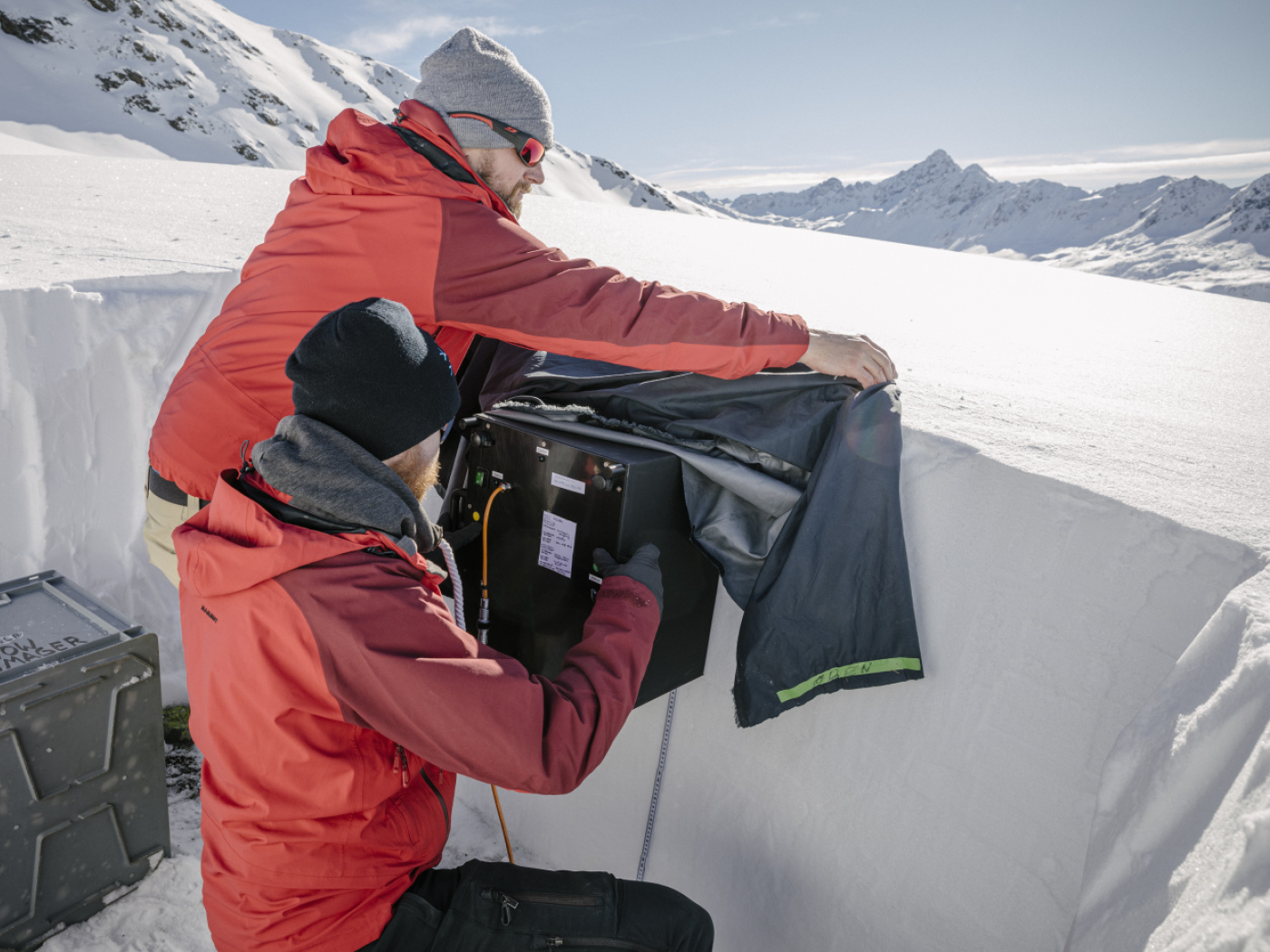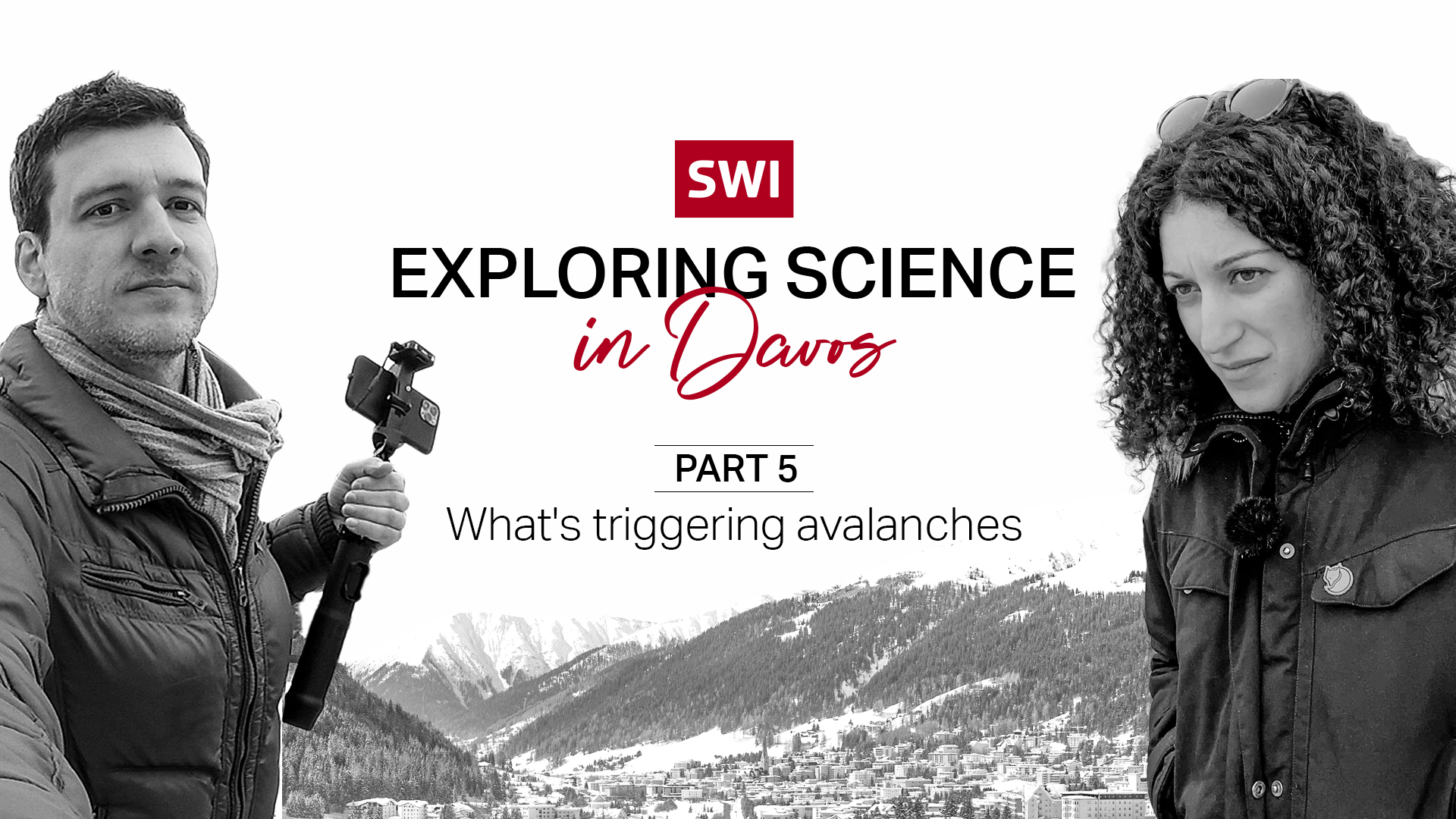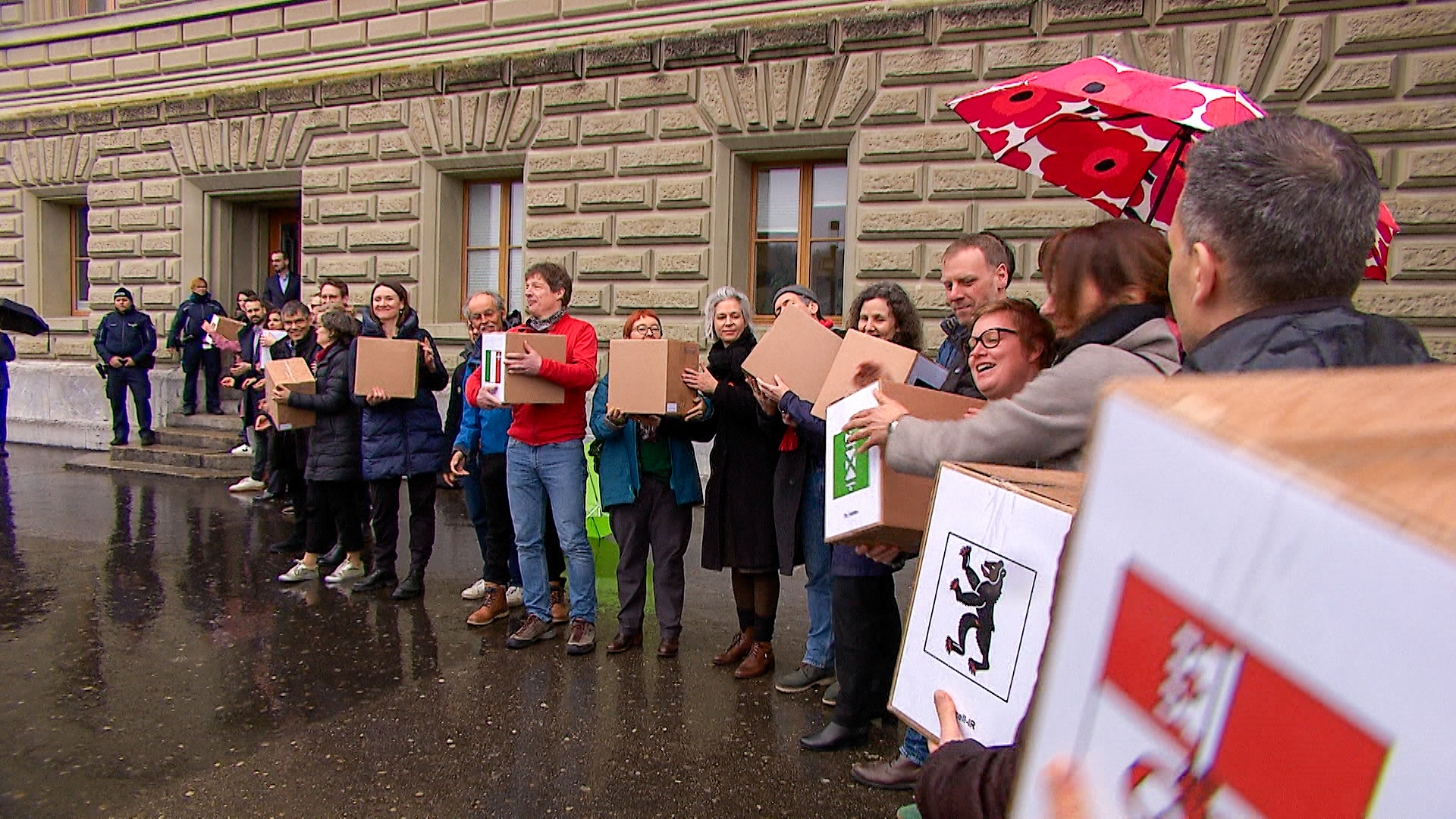
Swiss researchers patent new device for avalanche detection

The WSL Institute for Snow and Avalanche Research (SLF) announced on Tuesday that it has granted a group of Swiss researchers a patent for a device, named ‘Snowimager’, to enhance avalanche warnings.
+ Get the most important news from Switzerland in your inbox
While avalanche wardens often rely on time-consuming measurements of the snow cover, this new device examines the boundaries between different layers of snow in the snowpack.
+Avalanches: looming danger in the Swiss Alps
According to the SLF, the device speeds up and standardises this process. It has the potential to replace traditional, manual snow profiles in the long term.
Snow layers vary in density and the type of snow crystals. Their boundaries and composition are crucial for avalanche warning services to identify weak layers, which can break spontaneously or under pressure, such as from a skier. The density of the snow cover is also crucial for issuing timely flood warnings.
+Young skier dies in avalanche in Swiss AlpsExternal link
Swiss researchers develop device which uses invisible light to measure snow
The device uses invisible near-infrared light to analyse the density and grain size of snow layers. Two cameras measure the amount of light reflected by the snow crystals. The smaller the crystals, the more light is reflected.

More
What’s triggering avalanches?
Then, the cameras measure how far the light spreads laterally, which helps determine the snow cover’s density. The lower the density, the deeper the light penetrates into the snow layer. The deeper it penetrates, the further it spreads laterally due to reflection from the crystals.
The SLF already has three of these devices, which it lends to other research institutes and experts. The institute noted that there’s significant interest in them. The next step is to prepare the device for mass production.
Translated from German with DeepL/sp
This news story has been written and carefully fact-checked by an external editorial team. At SWI swissinfo.ch we select the most relevant news for an international audience and use automatic translation tools such as DeepL to translate it into English. Providing you with automatically translated news gives us the time to write more in-depth articles.
If you want to know more about how we work, have a look here, if you want to learn more about how we use technology, click here, and if you have feedback on this news story please write to english@swissinfo.ch.

In compliance with the JTI standards
More: SWI swissinfo.ch certified by the Journalism Trust Initiative















![The four-metre-long painting "Sonntag der Bergbauern" [Sunday of the Mountain Farmers, 1923-24/26] had to be removed by a crane from the German Chancellery in Berlin for the exhibition in Bern.](https://www.swissinfo.ch/content/wp-content/uploads/sites/13/2025/12/01_Pressebild_KirchnerxKirchner.jpg?ver=a45b19f3)













You can find an overview of ongoing debates with our journalists here . Please join us!
If you want to start a conversation about a topic raised in this article or want to report factual errors, email us at english@swissinfo.ch.